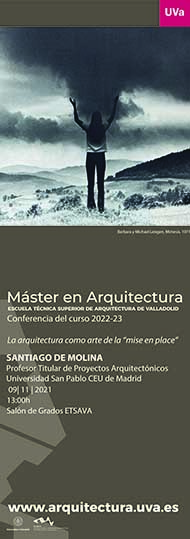Hay que decir, en honor a su fragilidad y a su carácter invisible a los ojos no entrenados, que esas líneas son, antes que líneas como tales, hilos delicadísimos de trayectorias tensas. No configuran a priori catenarias sino que, de aflojarse, simplemente caen y desaparecen como una finísima línea de agua trazada en un suelo al sol.
Esas trayectorias que conectan las formas son las que sostienen las ciudades y las que hacen de ellas un instrumento de continuidad. Esas líneas son las que traza la arquitectura cuando comienza su construcción, que como una araña, lanza su tela con la misma ansia que tienen esos animales frágiles, que saben que en solitario, sin una rama o un rincón que les acoja, están perpetuamente en peligro. Esas líneas son lo más parecido a la amistad que se despacha en el mundo de la forma. El trazado de esas líneas es lo difícil en arquitectura y no el poner ladrillos, cemento y barras de acero y vidrio sobre un solar. Esas líneas invisibles son las que no se dibujan sobre el papel, y que sin embargo se debe aspirar, absolutamente, a construir.
To honor their fragility and their invisibility to untrained eyes, it must be said that these lines are, before anything else, delicate threads of taut paths. They do not naturally form catenaries; rather, if they loosen, they simply fall and vanish like a thin line of water drawn across sunlit ground.
These paths that connect forms are what sustain cities, making them instruments of continuity. These lines are the ones traced by architecture as it begins its construction, casting its web like a spider, driven by the same urgency felt by those fragile creatures who know that, without a branch or corner to cling to, they are perpetually at risk. These lines are the closest thing to friendship that exists in the world of form. The true challenge in architecture is tracing these lines, not laying down bricks, cement, steel bars, and glass on a plot. These invisible lines are the ones that are never drawn on paper, but must, absolutely, be built.












































































































